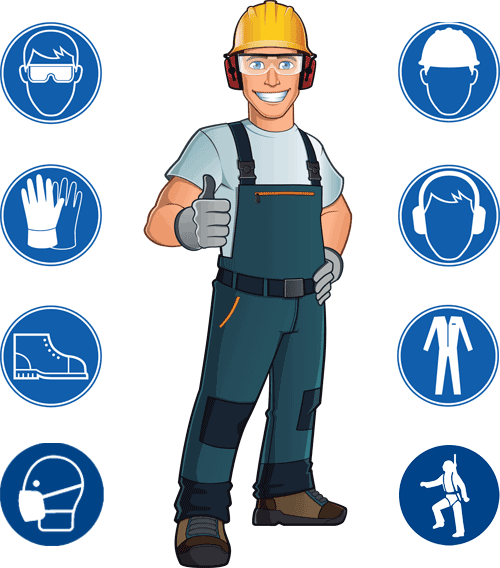Arc flash suits stand as critical ensembles of flame-resistant attire engineered to safeguard workers against grave injuries or ailments stemming from electrical arc flash hazards. These comprehensive suits comprise a spectrum of components including coveralls, leggings, aprons, footwear, smocks, gloves, pants, jackets, and vests. The resilience of the materials utilized in crafting these suits hinges on the minimum arc rating requisite for the specific task, contingent upon the level of associated risk. Arc flash suits are stratified into four hazard risk categories.
Ordinary work attire is highly susceptible to catching fire in the event of an electric arc flash. However, the utilization of an arc flash suit markedly diminishes the likelihood of severe injury when confronting these electrical hazards.
NFPA 70E Standard for Arc Flash Clothing and Suits The NFPA 70E standard delves into electrical safety work protocols and methodologies for employees engaged in tasks involving or in proximity to exposed, energized electrical apparatus. Compliance with this standard necessitates the donning of arc-rated (AR) clothing meeting the requisites outlined in ASTM F1959/F1959M (Standard Test Method for Determining the Arc Rating of Materials for Clothing) and ASTM F1506 (Standard Performance Specification for Flame Resistant and Electrical Arc Rated Protective Clothing Worn by Workers Exposed to Flames and Electric Arcs) whenever there exists a potential for an arc flash and the employee operates within the restricted approach or arc flash boundaries.
Prior to engaging in live work, employees are mandated to undertake a risk assessment to gauge the probability and severity of an arc flash commensurate with their tasks. It's imperative to recognize that compliance with NFPA 70E entails adherence to a national consensus safety standard published by NFPA chiefly to aid OSHA in formulating electrical safety regulations.
The Ramifications of an Electrical Arc Flash on Apparel Electrical arcs can escalate temperatures surpassing 35,000 degrees, promptly liquefying and vaporizing electrical conductors into combustible plasma gas. This gas undergoes rapid expansion owing to air superheating, generating a concussive blast that propels molten shrapnel at velocities exceeding the speed of sound. This phenomenon, termed arc blast by the NFPA, engenders a byproduct known as blast overpressure, which emerges upon the blast shock wave reaching the sound barrier. Blast overpressure, even at 2 pounds per square inch, can prove fatal, as it has the potential to collapse hollow organ systems such as the respiratory and gastrointestinal systems. Typically, blast and overpressure pose concerns solely at exceptionally high fault currents (e.g., 100kA+) or with large capacitors.
Selecting the Appropriate Arc Flash Attire and/or Suit The choice of suitable arc flash attire or suit hinges on your electrical safety prerequisites. The incident energy level at the work site dictates the requisite arc-rated PPE. We typically advocate for a "two-category" arc-rated clothing regimen. The first "category" constitutes daily wear, typically comprising an arc-rated shirt and pants with an 8 cal/cm^2 arc rating, worn consistently by electrical workers. The second "category" encompasses the suit. We advise consulting your arc flash evaluation to ascertain the highest arc flash hazard, with the suit's rating surpassing this value. While 40 cal/cm^2 stands as a common suit arc rating, suits rated for higher values are also available. It's crucial to note that arc flashes exceeding 8 cal/cm^2 can inflict equipment damage, while those exceeding 40 cal/cm^2 can result in substantial downtime. Just because a worker can be protected doesn't imply that the task should be executed while energized.
Where to Acquire Arc Flash Attire and/or Suit We refrain from affiliating with any supplier to maintain impartiality in our PPE recommendations. Our Safety Support Team remains at your disposal to address inquiries pertaining to your electrical workplace applications and to aid in selecting the appropriate attire to safeguard your workforce from arc flash incidents.
Numerous garment manufacturers have become readily accessible (particularly on platforms like Amazon), yet not all have undergone thorough testing. It's advisable to research your garment manufacturer thoroughly; if unfamiliar, request test results validating ATPV values. Some of the more reputable brands include Bulwark, Wrangler, Ariat, Enespro, and CPA (Chicago Protective Apparel). Trusted suppliers/distributors encompass Legion Safety, National Safety Apparel, or directly from reputable manufacturer websites.
Understanding the significance of arc flash suits and selecting the appropriate one for your team is paramount to ensuring workplace safety. We are committed to furnishing you with the requisite information and resources to facilitate optimal decision-making concerning your team's safety.



